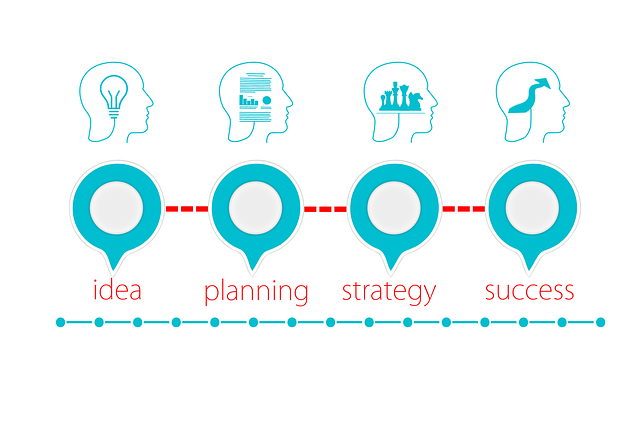Achieving and maintaining consistent cash flow is essential for business success. This involves forecasting future cash needs, implementing robust accounting practices, leveraging technology, and making informed financial decisions based on accurate tracking. By addressing cash flow problems early through process optimization (like automated invoicing), negotiating better terms, and efficient collection efforts, businesses can improve their cash position, optimize growth strategies, and navigate market fluctuations with confidence. Key steps include using historical data for forecasting, regularly updating predictions, implementing multi-faceted solutions for identifying and resolving cash flow issues, and strategically planning to enhance liquidity and fuel sustainable business expansion.
In today’s dynamic business landscape, ensuring consistent cash flow is vital for sustainable growth. Understanding cash flow dynamics forms the crux of effective financial stewardship. This article guides you through a comprehensive approach to mastering cash flow management, encompassing defining consistent cash flow, implementing robust strategies, leveraging forecasting tips, identifying and addressing common problems, and optimizing cash flow for business success. Discover how these practices can enhance your cash flow and drive growth.
- Understanding Cash Flow Dynamics: Defining Consistent Cash Flow
- Implementing Effective Cash Flow Management Strategies
- Leveraging Cash Flow Forecasting for Proactive Planning
- Uncovering and Addressing Common Cash Flow Problems
- Optimizing Cash Flow for Sustainable Business Growth
Understanding Cash Flow Dynamics: Defining Consistent Cash Flow

Understanding Cash Flow Dynamics is a cornerstone in improving business cash flow and achieving sustainable growth. Consistent Cash Flow refers to a stable and predictable flow of money into and out of your business, ensuring you have sufficient funds to meet operational expenses and fund growth opportunities. Defining consistent cash flow involves recognizing that it’s not just about generating revenue but also managing expenses and capital requirements effectively. It means anticipating future cash needs through forecasting tips and identifying potential cash flow problems early on.
Effective cash flow management strategies involve a combination of financial planning, robust accounting practices, and the use of technology to optimize cash flow. By implementing these strategies, businesses can ensure that their cash positions are accurately reflected in their accounts, enabling them to make informed decisions about investments, expansions, or even cost-cutting measures. Ultimately, mastering cash flow dynamics empowers entrepreneurs and business leaders to drive growth and navigate market fluctuations with confidence.
Implementing Effective Cash Flow Management Strategies

Implementing effective cash flow management strategies is a cornerstone for improving business cash flow and fostering sustainable growth. Start by adopting robust cash flow forecasting tips that allow you to predict incoming and outgoing funds with accuracy. This provides valuable insights into your financial health and enables proactive decision-making, such as when to reinvest or expand.
Additionally, identifying cash flow problems early on is crucial for optimizing cash flow. Regularly review your business transactions, accounts payable, and accounts receivable to pinpoint any bottlenecks or delays. Streamlining these processes, whether through automating invoices, negotiating better payment terms with suppliers, or enhancing collection efforts from clients, can significantly enhance your cash position.
Leveraging Cash Flow Forecasting for Proactive Planning

Consistent cash flow is the lifeblood of any thriving business, and forecasting is a powerful tool to achieve this. By leveraging cash flow forecasting, businesses can move from reactive to proactive financial management. This involves predicting future income and expenses, allowing entrepreneurs to identify potential cash flow problems before they arise. Through this process, you gain valuable insights into your business’s financial health and growth trajectory.
For effective cash flow forecasting, start by gathering historical data on sales, costs, and expenses. Analyze seasonal trends and external factors that influence revenue. Use these insights to create realistic forecasts for the future. Regularly update and refine your predictions as new information becomes available. This proactive approach enables you to optimize cash flow management strategies, ensuring that payments are made on time, debts are managed efficiently, and funds are allocated wisely to support business growth.
Uncovering and Addressing Common Cash Flow Problems

Many businesses struggle with inconsistent cash flow due to various challenges. The first step in improving business cash flow is uncovering these problems. Common issues include delayed payments from customers, inaccurate forecasting, and poor inventory management leading to overstocking or stockouts. Identifying these cash flow problems is crucial for implementing effective strategies.
Addressing these challenges requires a multi-faceted approach. Implementing robust cash flow management strategies, such as automating invoicing and payment processes, can streamline the collection of funds from clients. Using cash flow forecasting tips, like historical data analysis and setting realistic sales targets, helps in accurately predicting future income. Optimizing cash flow involves managing expenses efficiently, negotiating better terms with suppliers, and ensuring sufficient working capital to cover operational costs and support growth.
Optimizing Cash Flow for Sustainable Business Growth

To ensure consistent cash flow and drive sustainable business growth, effective cash flow management is paramount. It involves a combination of strategic planning, efficient processes, and insightful analysis. Start by implementing robust cash flow forecasting tips to predict future inflows and outflows accurately. This allows for better budgeting and resource allocation. Identify cash flow problems early on through regular monitoring and analysis, enabling prompt corrective actions.
Next, explore various cash flow management strategies like optimizing payment terms with suppliers, negotiating better deals, and streamlining invoicing processes. These tactics can significantly improve business cash flow by reducing payables and speeding up receivables. Remember that a healthy cash flow is the lifeblood of any organization, facilitating not just day-to-day operations but also strategic initiatives aimed at growth.
